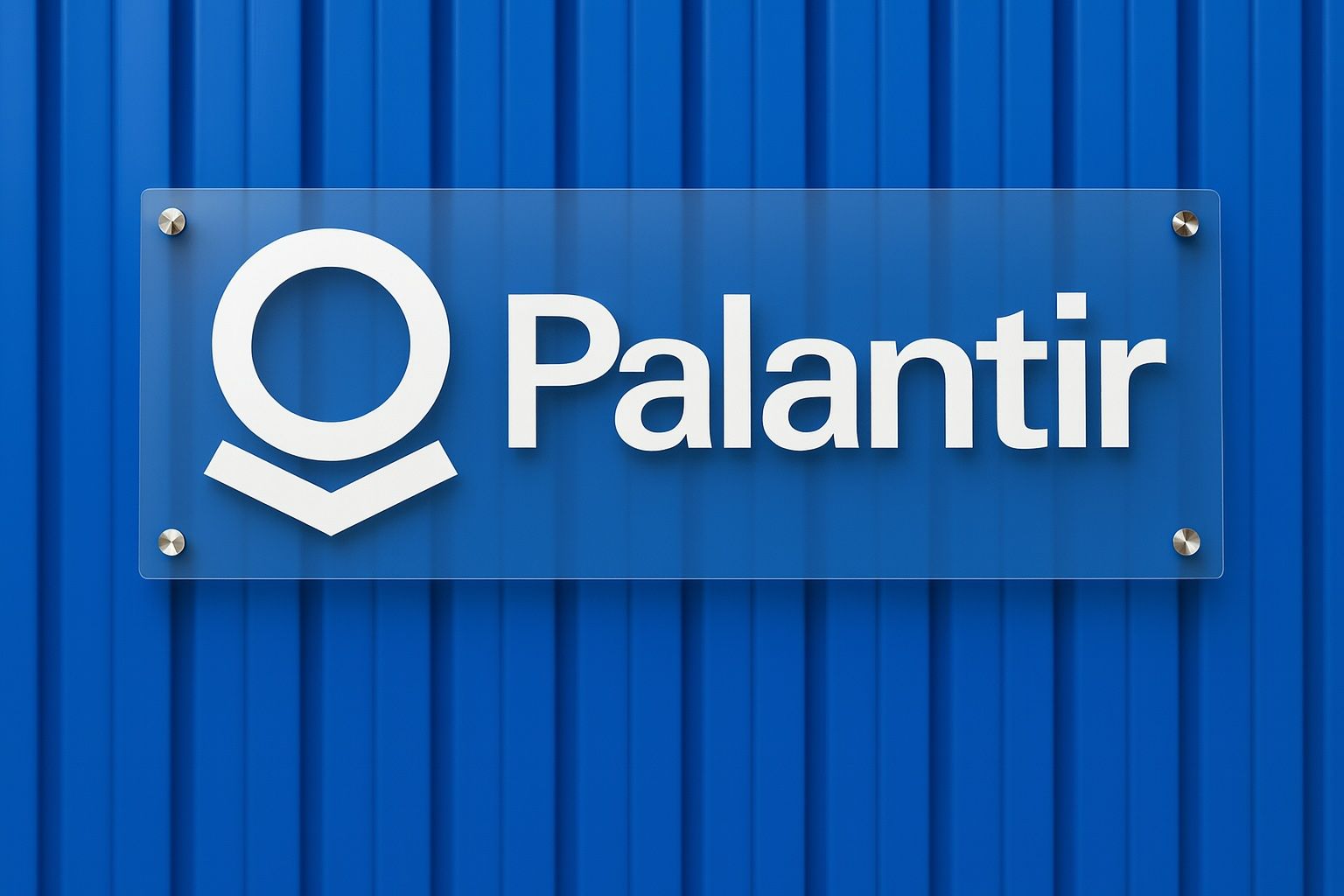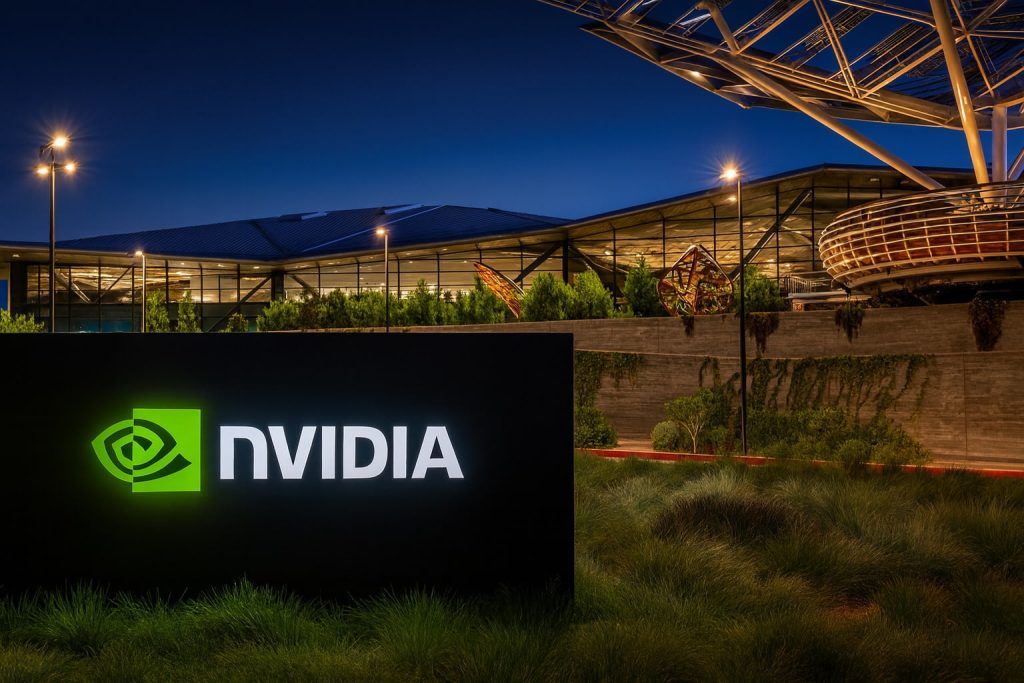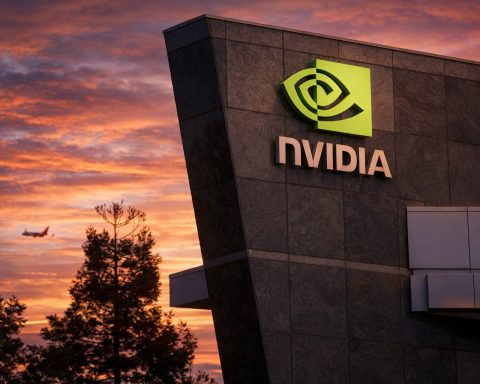Palantir Stock Soars on AI Momentum in 2025
Palantir Technologies Inc. (NYSE: PLTR) has emerged as one of 2025’s top-performing tech stocks, riding a wave of AI enthusiasm and strong execution. As of mid-November 2025, Palantir’s share price hovers around $175, reflecting a year-to-date gain of over 150% and a staggering 215% surge in the last 12 months [1]. This rally far outpaces the broader market and has propelled Palantir into the S&P 500 and Nasdaq-100 indices [2], a testament to its growing prominence.
The stock hit a 52-week high of about $207 following its latest earnings, before pulling back roughly 14–15% in early November as investors took profits [3]. Despite this slight cooldown, PLTR remains up nearly 190% year-over-year [4]. The brief post-earnings dip highlights a key theme: Palantir’s valuation has run hot, and any hint of “sell the news” profit-taking or macro jitters (like concerns over Fed rate policy) can spark short-term volatility [5] [6]. At current levels, Palantir trades at lofty multiples – for instance, a price-to-earnings ratio above 400 versus ~31 for the average tech stock [7] – signaling sky-high investor expectations. This rich valuation means the stock has little margin for error in the near term [8], and it partly explains the recent pullback on otherwise stellar news.
Q3 2025 Earnings: Record Growth Drives Optimism
Palantir’s latest financial results blew past Wall Street’s estimates, underscoring why the stock has been on a tear. In Q3 2025, Palantir posted $1.181 billion in revenue, up 63% year-over-year, with EPS of $0.21 beating forecasts by ~24% [9]. These weren’t just incremental beats – CEO Alex Karp hailed them as “arguably the best results that any software company has ever delivered” [10]. Adjusted operating margin hit a record 51% [11] [12], indicating robust profitability alongside rapid growth. One standout metric was U.S. commercial revenue, which soared 121% YoY in Q3 [13], reflecting red-hot demand from private-sector clients for Palantir’s AI-driven platforms. In fact, Palantir achieved an unprecedented “Rule of 40” score of 114 (revenue growth + profit margin) – an extremely rare feat in tech [14] – highlighting that it’s delivering growth and earnings quality at the same time.
This blowout quarter continues a trend of accelerating momentum. Palantir had already broken the $1 billion quarterly revenue mark in Q2 2025 with 48% YoY growth, a sharp inflection from the ~13% growth a year earlier [15]. Impressively, the company has notched eight consecutive quarters of accelerating revenue growth [16], largely thanks to its AI platform gaining traction. Q3’s U.S. revenue was up 77% YoY [17], and GAAP net income has remained positive for multiple quarters, a notable turnaround from Palantir’s pre-2023 losses. The company’s net dollar retention of 134% in Q3 [18] indicates existing customers are dramatically expanding their spending, validating Palantir’s “land-and-expand” strategy.
Management struck an upbeat tone on the earnings call, emphasizing that Palantir’s AI offerings are driving a new cycle of enterprise IT investment. The flagship Artificial Intelligence Platform (AIP) – launched in 2023 to bring generative AI and LLMs to private datasets – is credited with “insatiable demand” and “transformational impact” across deployments [19]. Unlike generic chatbots, Palantir’s AIP is built to plug securely into an organization’s proprietary data (via its unique Ontology data model) and deliver actionable insights, a value proposition resonating with both corporate clients and government agencies. Palantir’s full-year guidance was raised after Q3: the company now expects $4.396–$4.40 billion revenue in 2025 (+53% YoY) [20], implying a blistering 61% YoY growth in Q4 [21]. It also guided to over 104% YoY growth in U.S. commercial revenue for the full year [22] – a sign that the private-sector side of the business will continue expanding explosively. These strong projections and back-to-back earnings beats have underpinned a bullish outlook for PLTR [23].
Big Government Deals and Defense Tailwinds
Palantir’s deep roots in government and defense technology are paying off in a big way. In August 2025, the U.S. Army announced a massive new enterprise contract with Palantir. This arrangement consolidates dozens of existing Army contracts into a single deal, with an option for the Army to spend up to $10 billion over 10 years on Palantir’s software [24]. While it’s an indefinite-delivery framework (not a guaranteed $10B in revenue), the deal solidifies Palantir’s role as a long-term strategic vendor for the Pentagon. The goal is to streamline procurement and deploy Palantir’s data integration and AI tools faster across the Army [25] – a strong vote of confidence in Palantir’s Gotham platform for battlefield intelligence and logistics. This enterprise agreement (one of the largest ever of its kind) suggests Palantir’s defense business could scale dramatically if the military utilizes the full contract scope.
Across the Atlantic, Palantir is making similar inroads. In late 2025, the UK Ministry of Defence awarded Palantir a £750 million (~$1B) contract to integrate AI systems across the British Army, Royal Navy, and Air Force [26]. This is part of a broader partnership valued up to £1.5 billion, with Palantir investing in UK defense innovation and establishing London as its European defense hub [27]. The platform will fuse data across logistics, personnel, maintenance, and real-time battlefield awareness, giving UK commanders a unified AI-driven operational picture [28]. Importantly, this expands Palantir’s footprint beyond prior UK projects (like the Royal Navy’s “Project Kraken”) into a comprehensive, tri-branch defense solution [29]. The UK’s embrace of Palantir’s tech underscores how AI and big data are becoming core to military strategy, and it positions Palantir as a key partner for NATO allies looking to modernize defense capabilities.
These government wins come amid a broader upswing in defense and intelligence spending on AI. Geopolitical conflicts and great-power competition are forcing militaries to invest in cutting-edge software for situational awareness, logistics, and autonomous systems. Palantir – often described as “the operating system of modern warfare” – has seen its tools deployed from the Pentagon to overseas battlefields. (Notably, Palantir’s software has reportedly aided Ukraine by aggregating intelligence from drones and satellites to inform operations). With Washington’s FY2025 defense budget hitting a record $850+ billion and explicit Pentagon programs for AI-driven warfare, Palantir stands to benefit from these tailwinds. Its long-standing relationships with U.S. agencies (CIA, DoD, etc.) and proven platforms give it an edge as governments seek AI solutions that are secure, scalable, and battle-tested. Palantir’s Gotham software remains deeply embedded in U.S. defense and intel operations, and importantly “has no direct replacement available” [30] – a competitive moat that makes these contracts “stickier” over time.
Commercial Expansion and AI Partnerships
While government deals grab headlines, Palantir’s commercial business is now the primary growth engine – and a big reason for the stock’s AI halo. Commercial revenue makes up an increasing share of Palantir’s sales (over one-third of total revenue as of Q3), thanks to explosive demand from enterprises in finance, healthcare, retail, and beyond. Corporate clients are attracted to Foundry (Palantir’s data analytics platform) and the new AIP, which let them harness AI on their proprietary data with strict privacy controls. The result has been “insatiable” enterprise uptake, shortening sales cycles and boosting deal sizes. In Q3, Palantir closed a record $2.8 billion in total contract value (TCV) across 200+ deals [31], including 53 deals over $10 million each – evidence that small pilot projects are rapidly expanding into enterprise-wide deployments.
To further accelerate its commercial push, Palantir is forging strategic partnerships in the tech ecosystem. A notable alliance is with NVIDIA, the leader in AI hardware. In October 2025, Palantir and NVIDIA announced a collaboration to build a first-of-its-kind integrated AI stack for enterprises [32]. Palantir’s AIP will incorporate NVIDIA’s GPU-accelerated computing, CUDA-X AI libraries, and pre-trained models into its Ontology framework [33] [34]. This combination allows Palantir’s software to efficiently leverage NVIDIA’s cutting-edge chips and AI models to deliver “operational AI” – AI-powered decision-making in complex real-world processes – for industries like supply chain, healthcare, and finance. For example, Lowe’s is one early adopter using the Palantir-NVIDIA stack to create a digital twin of its global supply chain, enabling continuous AI optimizations in inventory and logistics [35] [36]. By fusing Palantir’s deep data integration capabilities with NVIDIA’s AI computing muscle, the partnership helps customers deploy AI solutions faster and at greater scale. It also reinforces Palantir’s positioning as “the platform that turns enterprise data into decision intelligence”, not just a point tool [37].
Palantir has also aligned with cloud providers and integrators to broaden its reach. Its software can run across multi-cloud environments (AWS, Azure, private clouds) via its Apollo deployment system [38] [39], giving customers flexibility. The company has a reseller partnership with IBM (embedding Palantir in IBM’s Cloud Pak for Data) and works with consultants like Accenture and Deloitte on large implementations (e.g. Accenture is a key partner in the NHS England healthcare data platform project Palantir won in 2023). These alliances are symbiotic: Palantir gains sales channels and domain expertise, while partners leverage Palantir’s unique tech to deliver AI transformation for clients.
At the core of Palantir’s commercial strategy is an emphasis on repeatable solutions and fast value delivery. Management often highlights that Palantir’s newer products (like AIP) come with pre-built “use case” templates and autonomous AI agents, which shorten time-to-value for customers. This more productized, scalable approach has reduced customer acquisition costs and improved margins over time [40] [41]. Palantir no longer needs to rely on lengthy custom projects for each client; instead, it can land small contracts (sometimes via short “Foundry bootcamps”) and then quickly expand usage as the software proves its ROI [42]. This land-and-expand flywheel is clearly turning: Palantir’s average revenue per top 20 customer is now $75 million (TTM), up 30% YoY [43], and its overall customer count jumped 43% YoY to 849 as of Q2 2025 [44]. With enterprises generating exponentially more data (the rise of generative AI is producing trillions of tokens that need context and analysis [45] [46]), Palantir’s ability to integrate and make sense of that data positions it strongly in the booming AI analytics market.
Financial Strength and Investor Sentiment
Palantir’s financial foundation has dramatically improved, easing earlier investor concerns about profitability and dilution. The company is now solidly profitable on a GAAP basis, and those profits are growing rapidly. Palantir reported over $300 million in GAAP net income in Q3 (roughly 40% net margin) and has remained net-income positive for each quarter since 2023. Its operations are also spinning off hefty cash flows: Q3 saw $508M in cash from operations and $540M in free cash flow (46% FCF margin) [47]. Over the last 12 months, Palantir generated $2.0 billion in adjusted free cash flow – a record high [48], indicating its business is not only scaling but highly cash-efficient. This has bolstered a war chest of $6.4 billion in cash and short-term investments on the balance sheet [49], with no debt on the books. Such liquidity gives Palantir strategic flexibility (for R&D, acquisitions, or continued buybacks) and insulates it in a high interest rate environment.
In fact, Palantir has been returning capital to shareholders via stock repurchases – a sign of confidence in its future. By Q3’s end, the company had bought back ~2.6 million shares out of a $1 billion authorization (with $880M remaining) [50]. This is notable for a growth-oriented tech firm and reflects management’s belief that investing in Palantir’s own stock is a good use of cash at times. With strong cash flow and a lighter expense profile (Palantir’s headcount has not needed to grow in line with revenue), the company’s financial position is solid. It can fund aggressive product development (e.g. advancing its AI platform, as seen with constant upgrades to AIP’s capabilities) while still expanding operating margins. Notably, Palantir achieved a 134% net dollar retention [51] and record operating leverage, meaning each incremental dollar of revenue is adding significantly to profit. All these factors give long-term investors comfort that Palantir is building a sustainable, self-funded growth model – a far cry from the heavy losses and stock-based comp dilution that once plagued its story.
Investor sentiment, however, is somewhat divided at this juncture, largely because of the valuation question. On one hand, enthusiasm for Palantir’s AI-driven growth is very high. The stock’s 2025 rally and inclusion in major indices have attracted considerable institutional ownership. Many bulls argue that Palantir is emerging as an “AI powerhouse” – with a dominant position in a burgeoning market – and thus deserves a premium valuation. Some analysts have even suggested PLTR could potentially double again in the next five years if it maintains its growth trajectory [52]. The company’s expanding commercial footprint and deep defense moat hint at a long runway for growth, supporting those optimistic forecasts.
On the other hand, skeptics point to Palantir’s extreme earnings multiple and the risk of growth normalization. After a 190%+ share price gain in a year [53], the bar for future performance is undeniably high. Any slowdown in growth, hiccup in contract execution, or broader tech sell-off could spur a sharper correction. In the first week of November, we saw a hint of this: despite stellar Q3 numbers, PLTR stock sank over 15% from its peak as profit-takers stepped in and analysts warned that much of the good news was “priced in” [54]. Macroeconomic factors also weigh on sentiment – for example, uncertainty around Federal Reserve policy or high interest rates can disproportionately impact richly valued tech stocks [55]. Palantir’s reliance on government spending adds another angle: while government contracts are steady, any political shifts in budgets or procurement could introduce volatility (the brief U.S. government shutdown risk in 2025 was one such overhang).
Wall Street’s current consensus on Palantir is thus neutral to cautiously optimistic. According to recent analyst surveys, PLTR carries a consensus “Hold” rating [56]. Out of the major analysts, there are only a few outright Buy ratings, with the majority advising Hold and a couple recommending Sell. Price targets span a wide range, reflecting the divided outlook: from as low as ~$50 to as high as $255 over the next 12 months [57]. The average target sits in the mid-$160s to $180s – roughly around the current trading price [58] – suggesting that, on average, analysts see the stock as fairly valued after its huge run. For instance, TipRanks reports an average target of ~$188 (about 9% upside) based on 16 recent analyst calls [59], while another survey pegs the average near $167 (slightly below the market) [60]. In essence, the sell-side is in “wait and see” mode: acknowledging Palantir’s impressive growth but also its full valuation.
Notably, the debate between bulls and bears has intensified. Renowned investor Michael Burry made headlines by disclosing a short position against Palantir, betting the valuation will crack [61]. Palantir’s CEO brushed off Burry’s bet as “crazy,” and some analysts agree – Wedbush’s Dan Ives, for example, publicly argued that Burry is wrong and that Palantir’s fundamentals justify further upside [62]. The stock’s short interest remains very low (~2.3% of float) [63], indicating few are willing to bet heavily against it, but options markets do show traders hedging for volatility around current levels [64]. Overall, sentiment can be summarized as bullish long-term optimism tempered by near-term valuation caution. Investors love the growth story and AI angle, yet many prefer a “buy on dips” approach given the frothy multiples. As one recent market commentary noted, long-term bulls “would welcome a deeper pullback into the $170-$180 range” to add positions [65] – precisely where the stock is now consolidating.
Outlook: Where Palantir Stock Could Be Headed
Looking ahead, Palantir’s trajectory will likely be shaped by its ability to sustain high growth in an evolving market. In the near term (next 6–12 months), the stock’s performance may be choppy. The AI hype cycle that lifted Palantir (and peers like NVIDIA) in 2023–2024 has matured, and investors are now demanding evidence of continued growth and real profits – which Palantir is providing in spades. However, any signs of growth deceleration from the 50%+ level toward a more “normal” rate could prompt multiple compression given the current valuation. The broader market environment also matters: if interest rates remain elevated or if tech stocks undergo a correction, high-beta names like PLTR could see outsized swings. Expect volatility – sharp rallies on positive news (new contract wins, big earnings surprises) and quick pullbacks on profit-taking or macro scares. That said, Palantir’s strong fundamentals (huge backlog, rising margins, cash-rich balance sheet) provide a cushion and should limit downside barring a major negative development.
Over the medium to long term, the outlook for Palantir appears increasingly promising. The company has firmly transitioned from an experimental DARPA-esque outfit into a scaled enterprise software leader at the heart of the AI revolution. Secular trends are in its favor: Businesses across industries are investing in AI to stay competitive, and governments are pouring resources into AI for defense and intelligence. Palantir’s unique end-to-end platforms (Foundry, Gotham, AIP) occupy a sweet spot at the intersection of these trends – something few competitors can claim. As evidence of its widening moat, Palantir’s software is deeply embedded in critical operations (from U.S. military planning to Fortune 500 supply chains), yielding high switching costs and long-term revenue streams. This suggests that Palantir’s growth could remain elevated (30–40% annually) for several years, albeit likely moderating from the current hyper-growth peak. In fact, consensus models project ~40% revenue CAGR over the next two years [66], and continued EPS expansion as operating leverage improves.
Many analysts and investors believe Palantir is still in the early innings of monetizing its AI leadership. If the company executes well – e.g. converts more pilots into enterprise-wide deployments, maintains innovation speed, and possibly introduces new AI products – PLTR’s earnings could grow into the valuation over time, allowing the stock to appreciate further. It’s telling that some analysts think Palantir could double its stock price in about five years [67], which implies robust compound growth ahead. Such upside would likely come from both sustained revenue growth and a premium narrative around Palantir being an indispensable AI platform globally. Additionally, as Palantir’s customer base broadens (for instance, winning more large commercial clients or additional allied governments), it reduces concentration risk and warrants a higher confidence from investors.
Of course, risks exist. Competition in the AI software space is intensifying – cloud giants (Microsoft, Amazon, Google) are integrating AI into their data platforms, and newer startups are targeting niches of the enterprise AI market. Palantir will need to continue proving its superiority in delivering ROI and staying a step ahead technologically (for example, by remaining LLM-agnostic and integrating the best models for customers’ needs [68]). Additionally, macro risks like a recession or government spending cuts could hit Palantir’s two main end-markets. And given the stock’s high expectations, any stumble (an earnings miss or growth hiccup) could bring swift punishment to the share price.
Bottom line: Palantir’s stock in late 2025 finds itself at the crossroads of exceptional company performance and elevated market expectations. The short-term forecast is for continued volatility around a generally positive trend – news of new contract wins, product launches, or outsized financial beats can fuel further rallies, while valuation concerns may cap extreme upside and lead to intermittent corrections. In the long run, if Palantir continues to execute and the AI revolution unfolds as anticipated, PLTR is well positioned to deliver solid returns. The company’s combination of breakneck growth, improving profitability, and strategic importance in both commercial and government domains supports a favorable long-term thesis. Investors should expect the stock to be “two steps forward, one step back”, but with an upward bias as fundamentals keep strengthening. Analyst consensus for now is essentially “steady as she goes” – a Hold – but importantly even the skeptics acknowledge Palantir’s “growth story is too hard to ignore” [69]. In summary, Palantir’s AI-fueled momentum and expanding market footprint make its stock one to watch into 2026, with the potential for significant upside over the coming years so long as the company can justify its rich valuation with continued stellar execution [70] [71].
Sources
- Palantir Q3 2025 Earnings Call Highlights – Investing.com [72] [73] [74]
- TipRanks – Palantir Stock Drops as Investors Flee Over Valuation Concerns [75] [76]
- Reuters – US Army pools contracts into up to $10 billion Palantir deal [77]
- Global X ETFs – The Next Big Theme: October 2025 [78]
- NVIDIA Newsroom – Palantir and NVIDIA Team Up to Operationalize AI [79] [80]
- MarketBeat via Investing.com – Palantir: Why Bulls Should Want a Bigger Drop in Stock [81] [82]
- TipRanks – Palantir’s Growth Story Is Too Hard to Ignore [83] [84]
- Medium (Beth Kindig) – Palantir Stock Forecast 2025: High Valuation? [85] [86]
- Saxo Bank – Palantir’s best numbers yet run into high expectations [87] [88]
- TipRanks – PLTR consensus and price target [89] [90]
References
1. www.investing.com, 2. www.investing.com, 3. www.investing.com, 4. www.tipranks.com, 5. www.tipranks.com, 6. www.tipranks.com, 7. www.tipranks.com, 8. www.investing.com, 9. www.investing.com, 10. www.investing.com, 11. www.investing.com, 12. www.investing.com, 13. www.investing.com, 14. www.investing.com, 15. beth-kindig.medium.com, 16. beth-kindig.medium.com, 17. www.investing.com, 18. www.investing.com, 19. www.investing.com, 20. www.investing.com, 21. www.investing.com, 22. www.tipranks.com, 23. www.tipranks.com, 24. www.reuters.com, 25. www.reuters.com, 26. www.globalxetfs.com, 27. www.globalxetfs.com, 28. www.globalxetfs.com, 29. www.globalxetfs.com, 30. www.tipranks.com, 31. www.investing.com, 32. nvidianews.nvidia.com, 33. nvidianews.nvidia.com, 34. nvidianews.nvidia.com, 35. nvidianews.nvidia.com, 36. nvidianews.nvidia.com, 37. nvidianews.nvidia.com, 38. beth-kindig.medium.com, 39. beth-kindig.medium.com, 40. www.home.saxo, 41. www.home.saxo, 42. www.home.saxo, 43. beth-kindig.medium.com, 44. beth-kindig.medium.com, 45. beth-kindig.medium.com, 46. beth-kindig.medium.com, 47. www.investing.com, 48. www.investing.com, 49. www.investing.com, 50. www.investing.com, 51. www.investing.com, 52. www.investing.com, 53. www.tipranks.com, 54. www.tipranks.com, 55. www.tipranks.com, 56. www.tipranks.com, 57. stockanalysis.com, 58. www.tipranks.com, 59. www.tipranks.com, 60. stockanalysis.com, 61. www.tipranks.com, 62. www.tipranks.com, 63. www.investing.com, 64. www.investing.com, 65. www.investing.com, 66. www.investing.com, 67. www.investing.com, 68. beth-kindig.medium.com, 69. www.tipranks.com, 70. www.tipranks.com, 71. www.tipranks.com, 72. www.investing.com, 73. www.investing.com, 74. www.investing.com, 75. www.tipranks.com, 76. www.tipranks.com, 77. www.reuters.com, 78. www.globalxetfs.com, 79. nvidianews.nvidia.com, 80. nvidianews.nvidia.com, 81. www.investing.com, 82. www.investing.com, 83. www.tipranks.com, 84. www.tipranks.com, 85. beth-kindig.medium.com, 86. beth-kindig.medium.com, 87. www.home.saxo, 88. www.home.saxo, 89. www.tipranks.com, 90. stockanalysis.com










